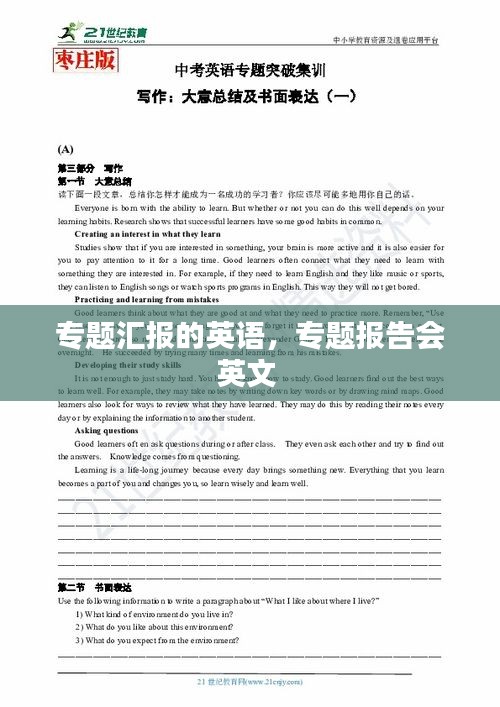Introduction to Special Topic Reports
A special topic report is a structured document that provides an in-depth analysis and discussion of a specific subject. These reports are commonly used in academic, professional, and corporate environments to communicate complex information effectively. Whether it's for a research project, a business presentation, or a policy analysis, a well-crafted special topic report can make a significant impact on the audience's understanding and perception of the subject matter.
Structure of a Special Topic Report
The structure of a special topic report is crucial for ensuring clarity and coherence. Typically, a report follows a standard format that includes the following sections: 1. Title Page: This includes the title of the report, the author's name, and the date of submission. 2. Abstract: A brief summary of the report's purpose, methodology, main findings, and conclusions. 3. Table of Contents: A list of the report's sections and their corresponding page numbers. 4. Introduction: An overview of the topic, its relevance, and the objectives of the report. 5. Body: The core of the report, which consists of several chapters or sections. Each section should focus on a specific aspect of the topic, supported by relevant evidence, data, and analysis. 6. Discussion: A detailed analysis of the findings, interpretations, and implications of the report. 7. Conclusion: A summary of the key points and the overall significance of the report. 8. Recommendations (if applicable): Suggestions for further action or research based on the findings. 9. References: A list of all the sources cited in the report, formatted according to a specific citation style. 10. Appendices (if applicable): Additional information that supports the report but is not essential to its main argument.
Writing Effective Sections
Each section of a special topic report plays a crucial role in conveying the message to the reader. Here are some tips for writing effective sections: 1. Title Page: The title should be clear, concise, and informative. It should give a hint about the topic and capture the reader's attention. 2. Abstract: Keep it concise and to the point. Aim for a length of 150-250 words, focusing on the report's main purpose, methods, findings, and conclusions. 3. Table of Contents: Ensure that the page numbers are accurate and that the structure of the table reflects the actual report's layout. 4. Introduction: Start with a broad statement about the topic and gradually narrow down to the specific focus of the report. Clearly state the objectives and the significance of the report. 5. Body: Divide the body into manageable sections, each with a clear subheading. Use headings and subheadings to guide the reader through the report's content. 6. Discussion: Present the findings in a logical order, analyze the data, and discuss the implications. Use evidence from the report and other sources to support your arguments. 7. Conclusion: Summarize the main points and reiterate the significance of the report. Avoid introducing new information in the conclusion. 8. Recommendations: Based on the findings, offer practical recommendations for action or further research. Ensure that these recommendations are feasible and relevant. 9. References: Use a consistent citation style (e.g., APA, MLA, Chicago) and ensure that all sources are cited accurately. 10. Appendices: Include any additional information that would be useful to the reader but is not essential to the main argument of the report.
Conclusion
In conclusion, a special topic report is a valuable tool for communicating complex information effectively. By following a structured format and writing each section with care, authors can ensure that their reports are clear, concise, and impactful. Whether it's for academic, professional, or corporate purposes, a well-crafted special topic report can contribute significantly to the reader's understanding and appreciation of the subject matter.
转载请注明来自河南电动门-感应门-郑州密码自动门-肯德基门,本文标题:《专题汇报的英语,专题报告会英文 》















 蜀ICP备2022005971号-1
蜀ICP备2022005971号-1
还没有评论,来说两句吧...